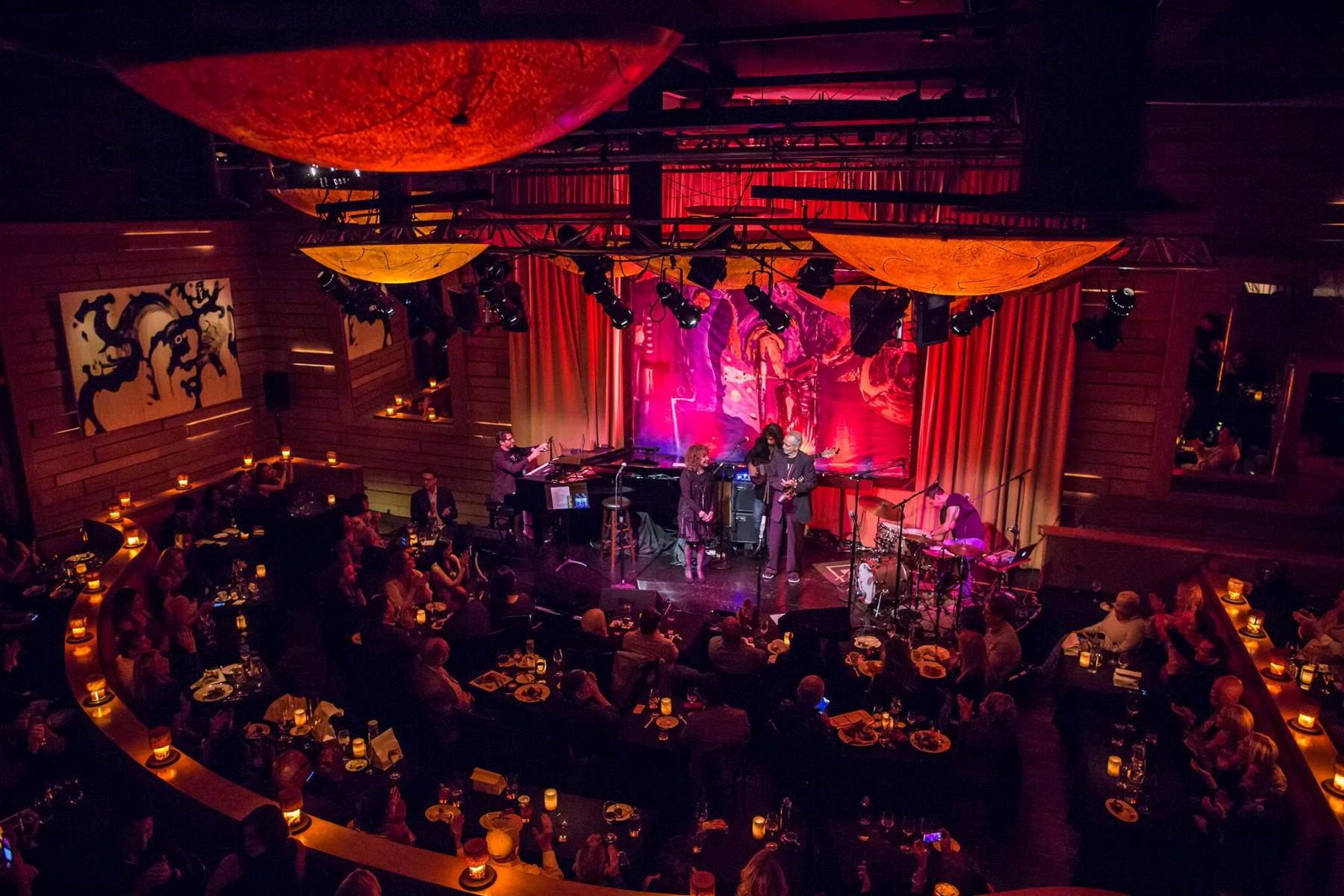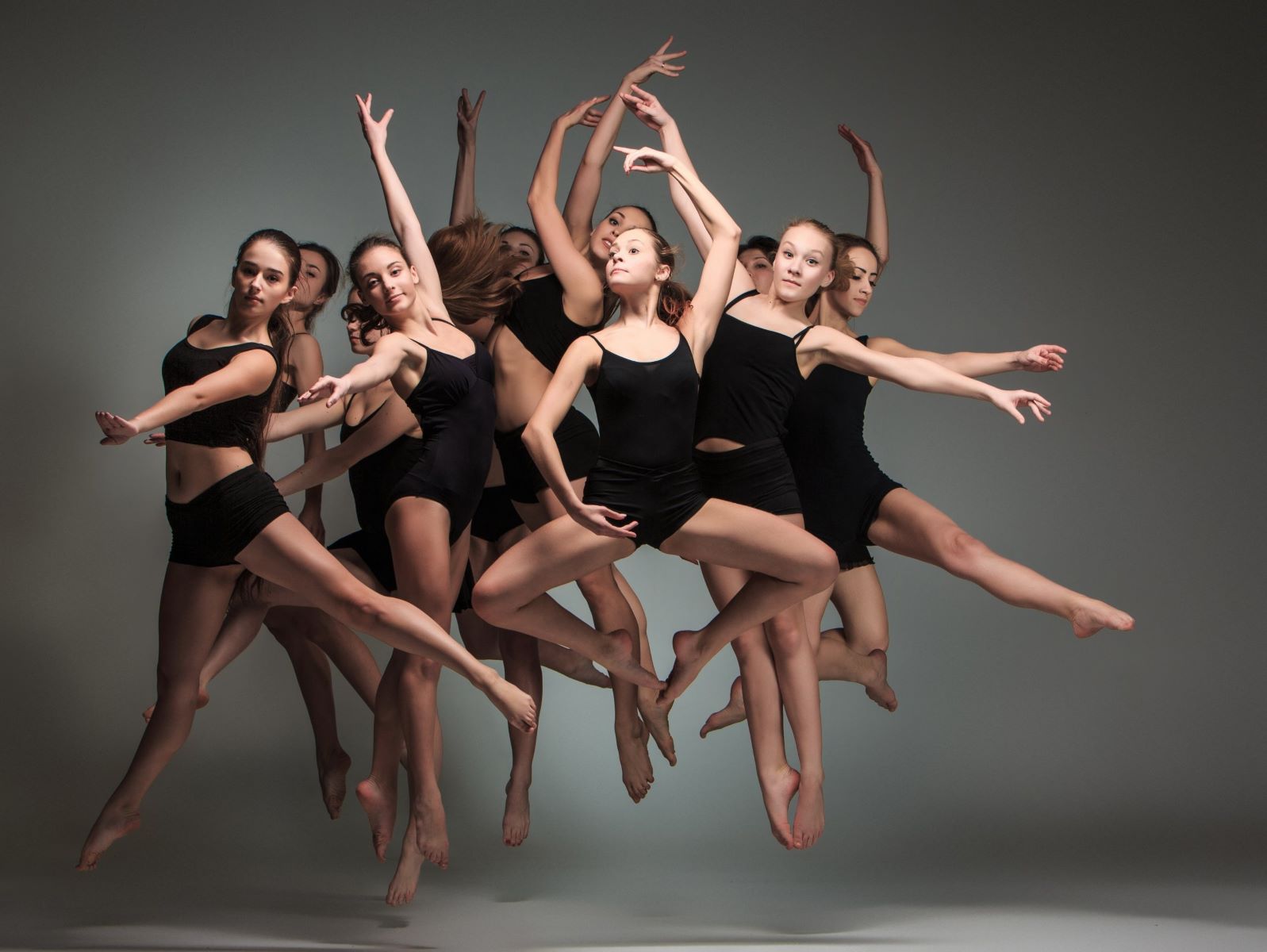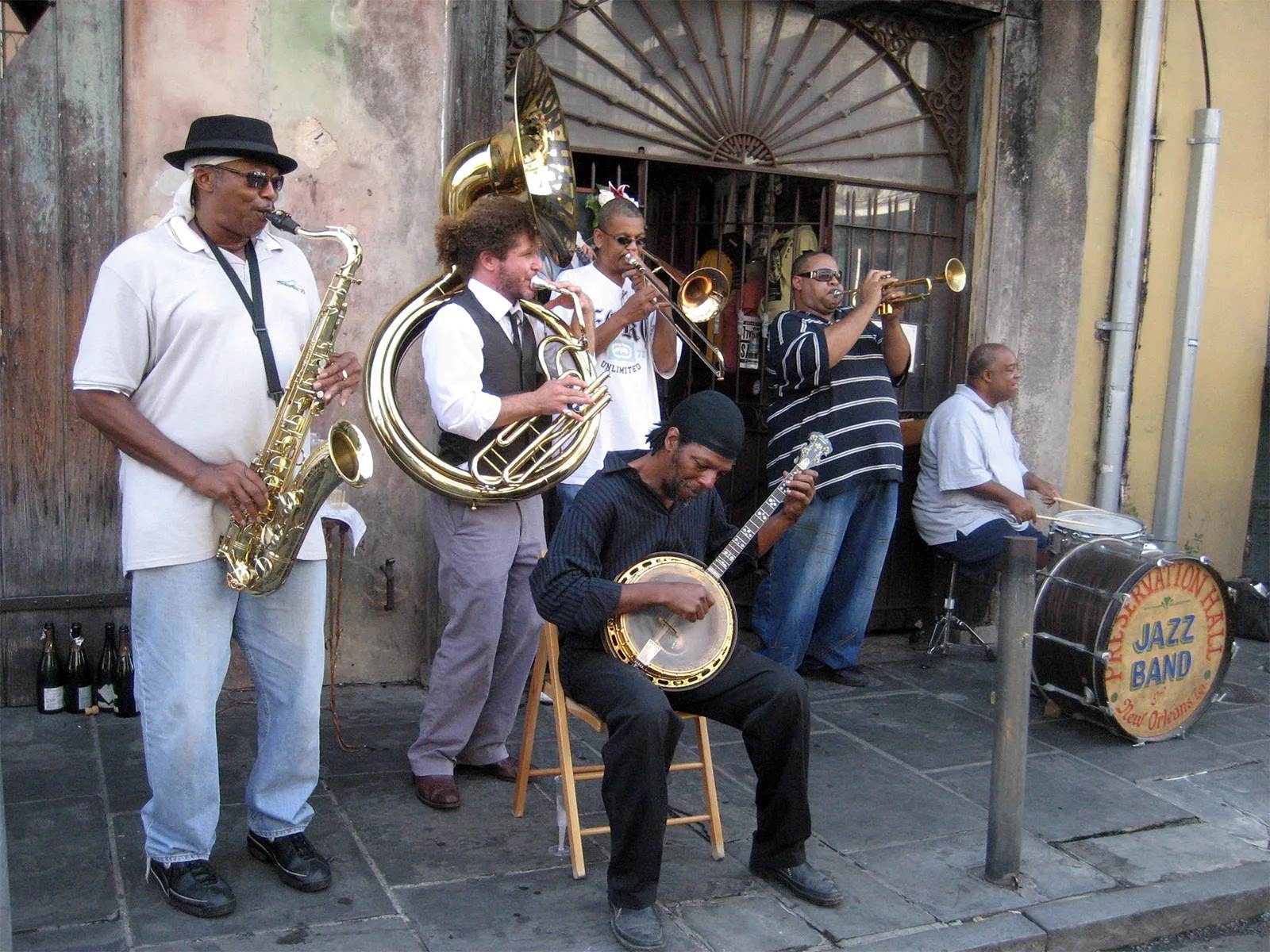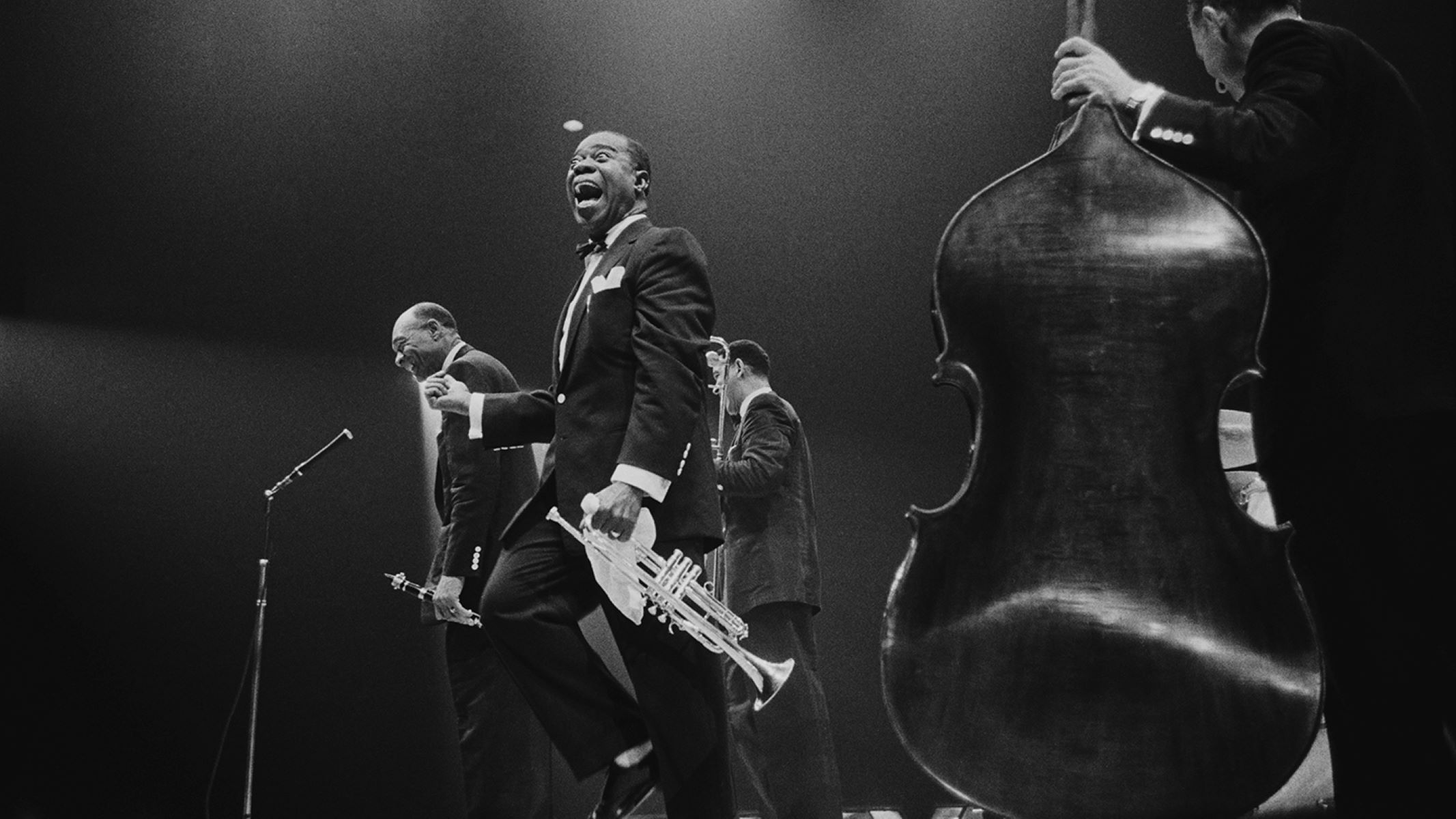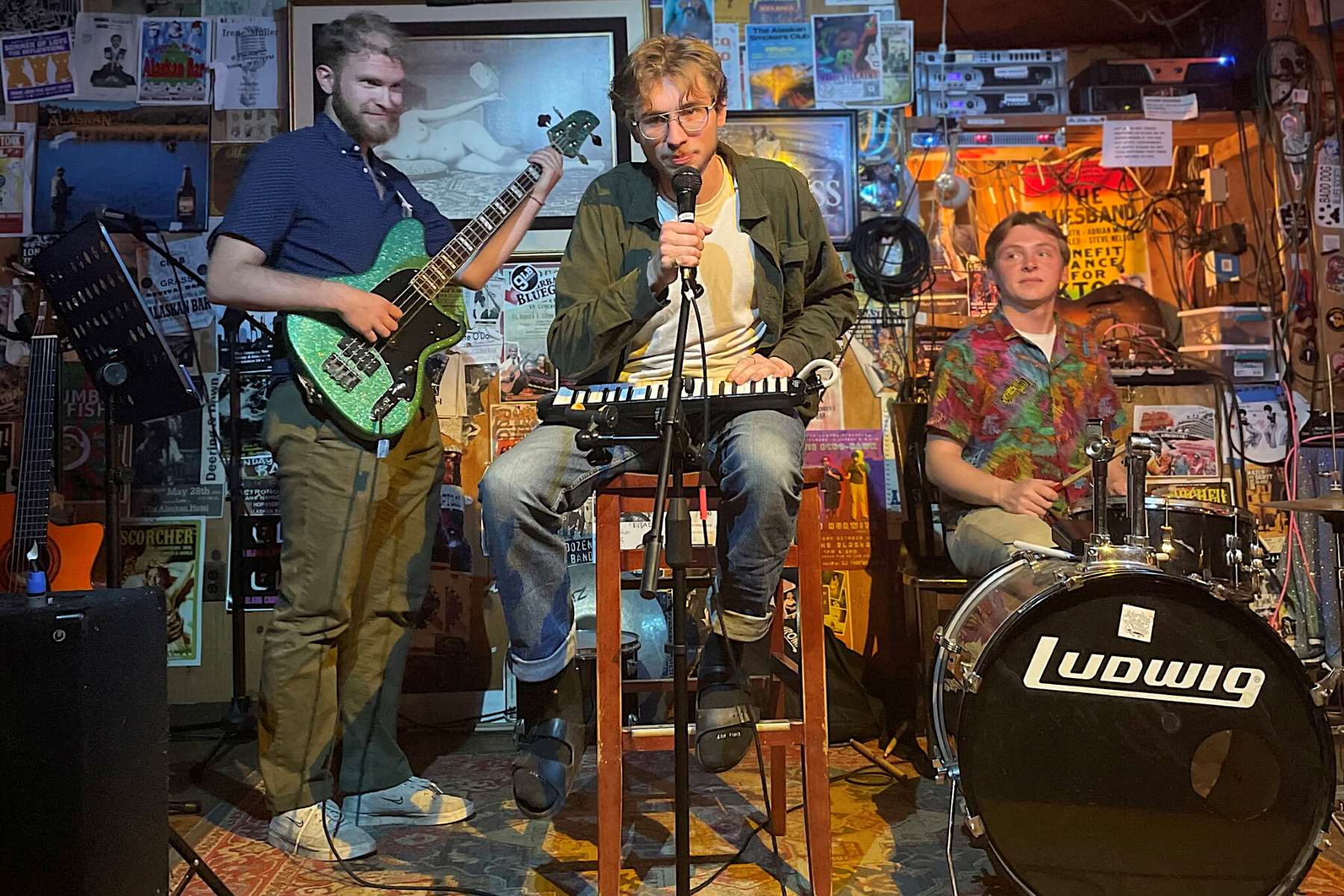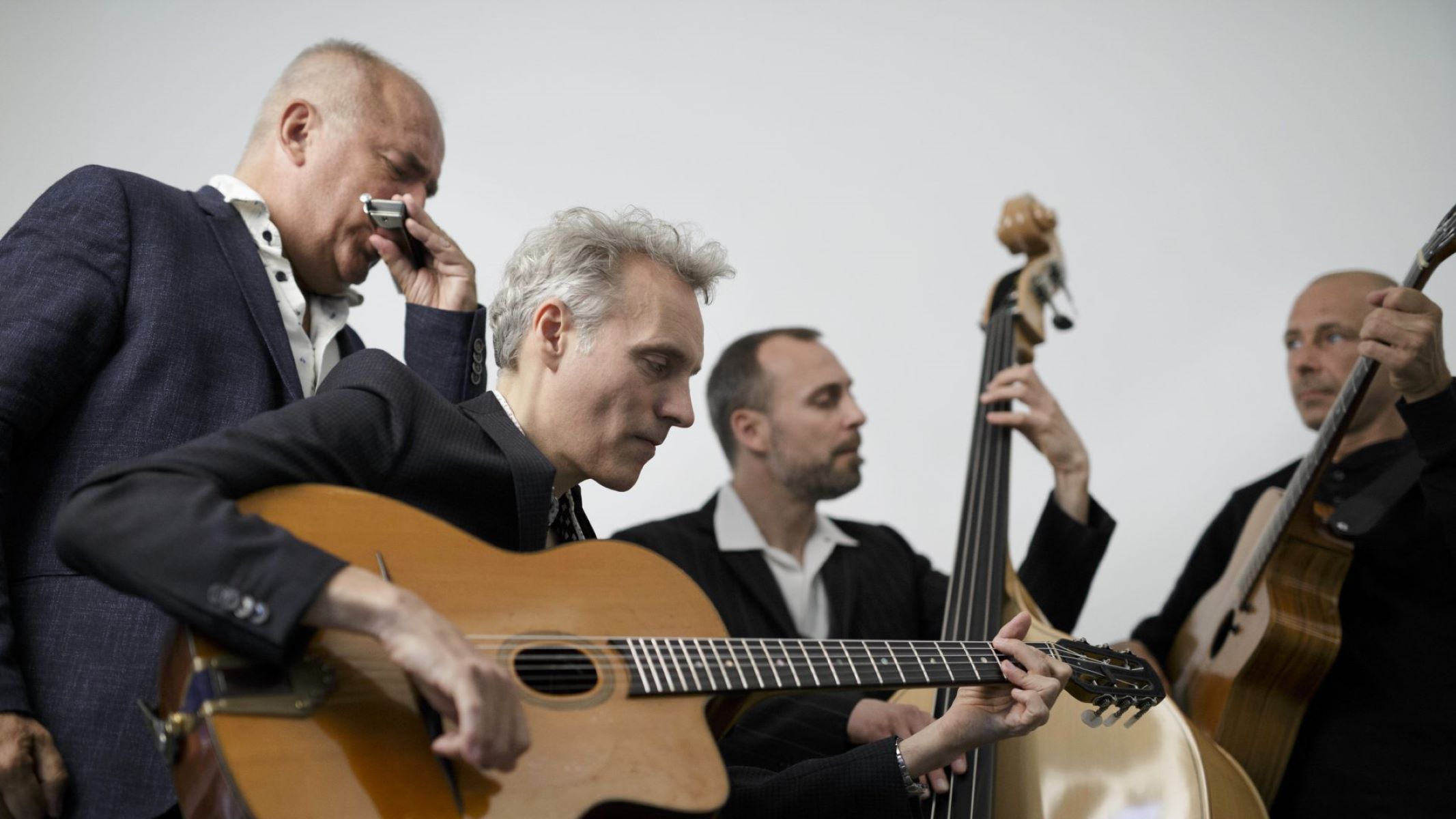

Jazz
What Is Gypsy Jazz Music
Modified: February 15, 2024
Discover the captivating allure of Gypsy Jazz music, a unique and vibrant genre influenced by the spirit of Jazz. Experience the rhythmic energy and virtuosity of this fascinating musical style.
(Many of the links in this article redirect to a specific reviewed product. Your purchase of these products through affiliate links helps to generate commission for AudioLover.com, at no extra cost. Learn more)
Table of Contents
Introduction
Welcome to the mesmerizing world of Gypsy Jazz! Born out of the bustling streets of 1930s Paris, this genre of music combines the rich traditions of Romani culture with the pioneering spirit of jazz. Gypsy Jazz, also known as Jazz Manouche or Django Reinhardt style, is characterized by its infectious rhythms, melodious improvisations, and the distinctive sound of the rhythm guitar.
The roots of Gypsy Jazz can be traced back to the virtuosic Belgian-born guitarist Django Reinhardt. Despite facing a devastating accident that left him with limited use of two fingers, Reinhardt’s incredible talent and resilience paved the way for a new style of jazz. Inspired by the lively Romani music he grew up with, Reinhardt blended it with the swing and improvisation of American jazz to create a unique and captivating genre.
Gypsy Jazz transcended borders and gained popularity throughout Europe, captivating audiences with its spirited performances and dazzling musicality. Today, it continues to thrive as a genre renowned for its technical brilliance, expressive melodies, and infectious rhythms.
In this article, we will delve into the origins of Gypsy Jazz, explore its distinct characteristics, take a closer look at the influential figures in the genre, examine the instruments used, and discuss the techniques and playing style that define Gypsy Jazz. We will also explore the impact of Gypsy Jazz on contemporary music and its enduring appeal.
Whether you’re a jazz enthusiast or simply curious about the intricacies of different musical genres, join us as we embark on a rhythmic journey through the captivating world of Gypsy Jazz!
Origins of Gypsy Jazz
To understand the origins of Gypsy Jazz, we must travel back in time to 1930s Paris. This vibrant city became a melting pot of cultures, attracting musicians from around the world. It was here that Gypsy Jazz was born, fusing the passionate rhythms of Romani music with the improvisational techniques of jazz.
The driving force behind Gypsy Jazz was the legendary guitarist Django Reinhardt. Born in Belgium in 1910, Reinhardt’s Romani heritage deeply influenced his musical style. Tragically, a fire at the age of 18 left him with severe burns on his hand, resulting in limited mobility in two fingers. Determined to continue playing, Reinhardt developed a unique playing technique that capitalized on his remaining capabilities. His distinctive sound and extraordinary abilities as an improviser set the stage for the birth of Gypsy Jazz.
Reinhardt’s collaboration with virtuoso violinist Stéphane Grappelli led to the formation of the Quintette du Hot Club de France in 1934, which became the first and most influential Gypsy Jazz ensemble. The quintet’s lineup consisted of Reinhardt and Grappelli, along with two rhythm guitars and a bass. Their lively performances and groundbreaking recordings catapulted Gypsy Jazz into the spotlight and established its place in musical history.
The influence of Romani music on Gypsy Jazz cannot be overstated. The Romani people, commonly referred to as gypsies, have a rich and diverse musical tradition. Their music is characterized by passionate rhythms, intricate melodies, and soulful improvisations. Reinhardt embraced these musical elements and seamlessly incorporated them into his playing, infusing Gypsy Jazz with an undeniable sense of depth and emotion.
At the same time, Gypsy Jazz was also influenced by the vibrant jazz scene in America. Reinhardt was exposed to recordings of American jazz musicians such as Louis Armstrong and Duke Ellington, who brought a fresh perspective to his musical journey. He embraced the swing style and incorporated elements of improvisation and scat singing, giving Gypsy Jazz a distinctive blend of Romani and American jazz influences.
As Gypsy Jazz gained popularity, it began to attract a diverse group of musicians who were captivated by its unique sound. Artists from various countries, including France, the Netherlands, and Germany, embraced Gypsy Jazz and incorporated it into their own musical styles. This resulted in a fusion of cultural influences that further enriched the genre.
Today, Gypsy Jazz continues to enchant audiences around the world with its spirited performances and captivating melodies. The genre’s origins in 1930s Paris may seem distant, but its timeless appeal and enduring legacy ensure that Gypsy Jazz remains an integral part of the jazz landscape.
Characteristics of Gypsy Jazz Music
Gypsy Jazz is a genre renowned for its distinctive characteristics that set it apart from other styles of jazz. Rooted in the Romani musical tradition and influenced by the improvisational spirit of jazz, Gypsy Jazz encompasses a range of elements that contribute to its unique sound and charm.
Rhythm is a driving force in Gypsy Jazz. The genre is characterized by its pulsating, infectious rhythms that create a vibrant and energetic atmosphere. The rhythmic foundation is typically provided by the rhythm guitar, with its percussive strumming patterns and rhythmic chordal accompaniment. This rhythmic drive sets the stage for the melodic improvisations that are a hallmark of Gypsy Jazz.
Melody and improvisation play a major role in Gypsy Jazz. The melodic lines are often intricate, with fast-paced runs, chromatic passages, and dazzling ornamentations. The musicians’ ability to improvise creatively and spontaneously is key to the spirit of Gypsy Jazz. Soloists take turns showcasing their improvisational skills, weaving melodic lines that dance above the swinging rhythm section.
Another notable characteristic of Gypsy Jazz is its emphasis on virtuosity. The genre attracts technically skilled musicians who display their prowess through lightning-fast runs, intricate chord voicings, and dazzling techniques. The lead guitar, often played with a plectrum or picks, takes center stage with its intricate and captivating solos.
Gypsy Jazz also prominently features the rhythm guitar, which provides the harmonic foundation and keeps the groove driving. The distinct percussive strumming technique known as “la pompe” adds a rhythmic complexity to the music by accentuating the off-beats and creating a swinging pulse.
The unique instrumentation of Gypsy Jazz also contributes to its distinct sound. Along with the lead guitar and rhythm guitar, the genre often includes the violin as a melodic instrument. The violin adds a touch of elegance and further enriches the harmonic and melodic textures of the music.
Harmonically, Gypsy Jazz draws heavily from the swing tradition. The use of extended chords, including dominant 7th, diminished, and augmented chords, adds color and depth to the harmonies. The rhythmic drive and pulsating chords combine to create a dynamic and vibrant musical landscape.
Overall, Gypsy Jazz is characterized by its infectious rhythms, dazzling improvisations, virtuosic performances, and a unique blend of Romani and jazz influences. The genre’s distinctive characteristics continue to captivate audiences, making Gypsy Jazz a beloved and cherished style of music.
Influences on Gypsy Jazz
Gypsy Jazz is a genre that embraces a multitude of influences, shaping its sound and contributing to its unique identity. The following are some of the key influences on Gypsy Jazz:
Romani Music: The Romani people, commonly referred to as gypsies, have a rich musical heritage that heavily influenced Gypsy Jazz. The passionate rhythms, soulful melodies, and improvisational spirit of Romani music are integral to the sound of Gypsy Jazz. Django Reinhardt, the pioneer of Gypsy Jazz, was of Romani descent and incorporated these elements into his playing.
Jazz: Gypsy Jazz emerged at a time when jazz was gaining popularity, particularly in the United States. Reinhardt and other jazz musicians of the time were exposed to the rhythmic complexity, improvisational techniques, and harmonic innovations of jazz music. They embraced these elements and incorporated them into Gypsy Jazz, infusing the genre with a swing feel and a sense of improvisational freedom.
Traditional Folk Music: Beyond the influence of Romani music, Gypsy Jazz also drew inspiration from the traditional folk music of various countries. As the genre spread throughout Europe, it absorbed elements from local folk traditions, such as French musette, Spanish flamenco, and Hungarian folk music. These diverse influences contributed to the rich tapestry of Gypsy Jazz.
Classical Music: Classical music also played a role in shaping Gypsy Jazz. Django Reinhardt and other early Gypsy Jazz musicians often drew inspiration from the works of composers like Bach, Mozart, and Debussy. They incorporated elements of classical phrasing, counterpoint, and harmonic structures into their compositions and improvisations, adding a touch of sophistication to the genre.
American Jazz Musicians: Reinhardt and other Gypsy Jazz musicians were exposed to the recordings of American jazz musicians, such as Louis Armstrong and Duke Ellington. The virtuosity, improvisational skills, and swing feel of these musicians left a lasting impact on the development of Gypsy Jazz. Reinhardt, in particular, was inspired by Armstrong’s trumpet playing and incorporated elements of his style into his guitar solos.
Contemporary Music: Gypsy Jazz continues to evolve and draw influences from contemporary musical styles. Musicians today often infuse elements of modern jazz, fusion, and even rock into their Gypsy Jazz compositions. These contemporary influences help keep the genre fresh and vibrant, while still retaining its traditional roots.
The diverse range of influences on Gypsy Jazz illustrates its ability to blend different musical traditions and create a truly distinct sound. These influences have shaped the genre and continue to inspire musicians to push the boundaries of Gypsy Jazz, while remaining true to its rich heritage.
Prominent Gypsy Jazz Musicians
Gypsy Jazz boasts a rich history of talented musicians who have made significant contributions to the genre. These musicians have not only embraced the spirit and technicality of Gypsy Jazz but have also pushed its boundaries, expanding its reach and influence. Here are a few notable figures in the world of Gypsy Jazz:
- Django Reinhardt: Widely regarded as the father of Gypsy Jazz, Django Reinhardt’s innovative guitar playing revolutionized the genre. Despite a tragic accident that left him with limited mobility in his fingers, his unparalleled technique and captivating improvisations set a new standard for Gypsy Jazz. Reinhardt’s compositions, such as “Minor Swing” and “Nuages,” remain iconic pieces in the genre.
- Stéphane Grappelli: A virtuoso jazz violinist, Stéphane Grappelli was Django Reinhardt’s musical partner in the Quintette du Hot Club de France. Grappelli’s melodic improvisations and refined technique added elegance and sophistication to the music. His collaboration with Reinhardt set the stage for the development of Gypsy Jazz.
- Bireli Lagrene: Regarded as one of the modern masters of Gypsy Jazz, Bireli Lagrene burst onto the scene as a child prodigy. His technical virtuosity, fiery improvisations, and versatility on both guitar and violin have earned him acclaim and recognition as one of the genre’s most dynamic performers.
- Tchavolo Schmitt: Known for his soulful and emotive playing, Tchavolo Schmitt is a highly respected figure in the world of Gypsy Jazz. His intricate chord voicings, melodic lines, and unique approach to rhythm have solidified his place as one of the most influential guitarists in the genre.
- Dorado Schmitt: Dorado Schmitt, a French guitarist and violinist of Romani descent, seamlessly blends traditional Romani music with Gypsy Jazz. His fiery and expressive playing, rooted in his Romani heritage, brings a distinct flavor to the genre. Dorado Schmitt’s contributions have not only propelled Gypsy Jazz forward but also preserved its deep connection to the Romani tradition.
These are just a few of the many talented musicians who have left an indelible mark on the world of Gypsy Jazz. Each artist brings their unique styles and interpretations, enriching the genre and pushing its boundaries. Their virtuosic performances, innovative techniques, and emotive playing have inspired countless musicians and continue to captivate audiences around the globe.
Instruments Used in Gypsy Jazz
Gypsy Jazz, with its distinctive sound and rhythm, relies on a specific set of instruments to create its captivating atmosphere. These instruments work in harmony to produce the rhythmic drive, harmonic foundation, and melodic improvisations that define the genre. Let’s explore the key instruments commonly used in Gypsy Jazz:
- Guitar: The guitar is the backbone of Gypsy Jazz. Two types of guitars commonly feature in Gypsy Jazz ensembles: the lead or solo guitar and the rhythm guitar. The lead guitar, often a Selmer- or Maccaferri-style acoustic guitar, takes the spotlight with its melodic improvisations. The rhythm guitar, usually a Selmer- or Favino-style guitar, provides the percussive strumming and chordal accompaniment that drives the rhythm forward.
- Violin: The violin is another prominent instrument in Gypsy Jazz. It adds a melodic and expressive quality to the music, often taking on the role of a second lead instrument alongside the guitar. The violinist’s soaring solos and intricate melodic lines contribute to the genre’s distinctive sound. Players like Stéphane Grappelli and Dorado Schmitt have showcased the violin’s versatility and virtuosity in Gypsy Jazz.
- Double Bass: The double bass, also known as the upright bass or the contrabass, provides the low-end foundation in Gypsy Jazz ensembles. Its warm and resonant tone fills out the sound and supports the rhythmic and melodic elements of the music. The double bass adds depth and richness to the ensemble, often played with the use of pizzicato and occasional bowing techniques.
- Accordion: Though not as commonly used as the guitar or violin, the accordion occasionally finds its place in Gypsy Jazz. The accordion adds a unique and nostalgic sound, infusing the music with a touch of French musette influence. Its rich and expressive tones create an atmosphere reminiscent of the streets of Paris, further enhancing the charm of Gypsy Jazz.
- Clarinet: While not as prevalent as the guitar or violin, the clarinet occasionally takes part in Gypsy Jazz ensembles. Its unique timbre and ability to blend with the lead guitar make it a captivating addition to the sound. The clarinet adds a touch of jazz authenticity and expands the melodic possibilities within the genre.
It’s important to note that Gypsy Jazz music is not limited to these instruments alone. Many artists incorporate additional instruments, such as piano, saxophone, or even drums, to experiment with the genre and expand its sonic landscape. However, the guitar, violin, double bass, and accordion remain at the core of Gypsy Jazz, creating the distinct sound that has captivated audiences for decades.
Techniques and Playing Style in Gypsy Jazz
Gypsy Jazz is known for its unique playing style and technical prowess. Both the lead guitarist and rhythm guitarist employ specific techniques to create the infectious rhythms and melodic improvisations that define the genre. Let’s explore some of the key techniques and playing style characteristics in Gypsy Jazz:
La Pompe: The driving force behind Gypsy Jazz rhythm is the percussive strumming technique known as “la pompe.” The rhythm guitarist plays continuous and syncopated downstrokes on the chords, emphasizing the off-beats to create a pulsating groove. This technique provides the rhythmic foundation for the ensemble and contributes to the energetic and upbeat nature of Gypsy Jazz.
Arpeggios and Chord Voicings: Gypsy Jazz guitarists utilize a variety of arpeggios and chord voicings to create rich and colorful harmonies. By incorporating extended chords, such as 9th, 13th, and augmented chords, they add depth and complexity to the music. The use of unique chord inversions and progressions contributes to the distinctive sound of Gypsy Jazz.
Fast Picking: Gypsy Jazz guitarists are known for their lightning-fast picking techniques. Rapid-fire alternate picking, where the guitarist alternates between upstrokes and downstrokes, allows for the execution of remarkable runs and melodic lines. This technique enables the lead guitarist to navigate the instrument with incredible speed and precision during their improvisations.
Improvisation: Improvisation is a cornerstone of Gypsy Jazz. Both the lead guitarist and the violinist take turns during solos, creating melodic improvisations that are the highlight of the performance. The ability to spontaneously craft intricate and soulful melodies is a testament to the creativity and technical skill of Gypsy Jazz musicians.
Minor Swing Feel: The minor swing feel is an essential characteristic of Gypsy Jazz. The use of minor keys, particularly the Dorian mode, gives the music a distinct melancholic and emotive quality. The rhythm guitar’s consistent “la pompe” rhythm combined with the soulful improvisations creates a unique atmosphere that captures the essence of Gypsy Jazz.
Call and Response: Gypsy Jazz often incorporates call and response patterns between the lead guitar and rhythm guitar. The lead guitarist introduces a melodic phrase or lick, which is then echoed or answered by the rhythm guitar. This interplay enhances the dynamic and interactive nature of the music, adding further depth to the arrangements.
Dynamic Swells: Gypsy Jazz musicians incorporate dynamic swells into their playing, subtly varying the intensity and volume to add expression and emotion to their performances. This technique allows for the shaping of phrases and the creation of tension and release, enhancing the storytelling aspect of the music.
These techniques and playing style characteristics are the building blocks of Gypsy Jazz. They create the infectious rhythms, captivating melodies, and technical brilliance that have made the genre so enduring and beloved. Gypsy Jazz musicians master these techniques to create a seamless and exhilarating musical experience that captivates audiences around the world.
Gypsy Jazz in Contemporary Music
Gypsy Jazz, with its timeless appeal and distinctive sound, has found a place in contemporary music scenes around the world. While the genre’s roots lie in the 1930s, it continues to evolve and influence musicians in various musical genres. Here are some ways in which Gypsy Jazz has made its mark in contemporary music:
Fusion with Other Genres: Gypsy Jazz has been successfully fused with other genres, resulting in unique and exciting musical hybrids. Musicians have blended Gypsy Jazz with elements of rock, Latin music, funk, and even electronic music, creating innovative and captivating soundscapes. This fusion expands the boundaries of Gypsy Jazz and appeals to a wider audience.
Jazz and World Music: Gypsy Jazz has made its way into modern jazz and world music circles, contributing to the diversity and richness of these genres. Contemporary jazz musicians incorporate Gypsy Jazz elements, such as the rhythm guitar’s “la pompe” and melodic phrasing, to create a vibrant and rhythmic atmosphere. The genre’s influence can also be heard in world music ensembles, adding a distinct flavor to their compositions and performances.
Crossover Artists: Many Gypsy Jazz musicians have crossed over into other genres, bringing their technical prowess and improvisational skills to new musical landscapes. Artists like Bireli Lagrene and Stochelo Rosenberg have collaborated with renowned musicians from different genres, adding a touch of Gypsy Jazz to their projects. These collaborations introduce the genre to new audiences and showcase its versatility.
Popularity in Film Soundtracks: Gypsy Jazz has found a niche in the world of film soundtracks, particularly in period pieces or movies that capture the romanticism of the past. The genre’s evocative and nostalgic sound often accompanies scenes set in the early 20th century or in European cafes, enhancing the visual narrative and immersing viewers in the film’s atmosphere.
Gypsy Jazz Revivalists: A new generation of musicians continues to embrace Gypsy Jazz and carry its legacy forward. These musicians, often referred to as “Gypsy Jazz revivalists,” are dedicated to keeping the genre alive and introducing it to younger audiences. They infuse Gypsy Jazz with their own creative energy and modern sensibilities, ensuring that the genre remains relevant and vibrant.
Gypsy Jazz’s influence on contemporary music demonstrates its enduring appeal and adaptability. As musicians creatively blend the genre with other styles, it evolves while maintaining its unique charm. The fusion with different genres, the crossover of artists, and its use in film soundtracks all contribute to the genre’s continued relevance and popularity in the modern music landscape.
Conclusion
Gypsy Jazz, with its infectious rhythms, captivating improvisations, and unique blend of Romani and jazz influences, has carved a special place in the world of music. From its origins in 1930s Paris to its influence on contemporary music, Gypsy Jazz continues to captivate audiences worldwide.
The genre’s roots can be traced back to the innovative genius of Django Reinhardt, whose resilience and virtuosity paved the way for a new style of jazz. Reinhardt’s collaboration with Stéphane Grappelli and the formation of the Quintette du Hot Club de France propelled Gypsy Jazz into the spotlight, establishing it as a genre that celebrates technical brilliance and expressive melodies.
Gypsy Jazz has been shaped by a multitude of influences, including Romani music, American jazz, classical music, and traditional folk styles. These diverse influences contribute to the genre’s rich tapestry and its ability to encapsulate the spirit of different cultures.
Prominent figures in Gypsy Jazz, such as Django Reinhardt, Stéphane Grappelli, Bireli Lagrene, and Tchavolo Schmitt, have pushed the boundaries of the genre, inspiring generations of musicians. Their virtuosic performances and innovative techniques continue to resonate with audiences, creating a lasting legacy.
The instrumentation of Gypsy Jazz, featuring guitars, violin, and double bass, creates a captivating sonic palette that showcases the genre’s rhythmic drive, harmonic depth, and melodic improvisations. The percussive strumming of the rhythm guitar, the lightning-fast picking of the lead guitar, and the expressive melodies of the violin contribute to the genre’s distinctive sound.
In contemporary music, Gypsy Jazz has found new life through fusion with other genres, collaborations with artists from diverse musical backgrounds, and its popularity in film soundtracks. It continues to inspire musicians to experiment and push boundaries, while remaining true to its roots.
In conclusion, Gypsy Jazz is a genre that has stood the test of time, captivating audiences through its unique sound, technical prowess, and emotive performances. It remains a vibrant and evolving genre, with a legacy that continues to shape the musical landscape. Whether you’re a fan of jazz or simply appreciate the beauty of music, Gypsy Jazz offers a rhythmic journey through history, culture, and the boundless creativity of the human spirit.

